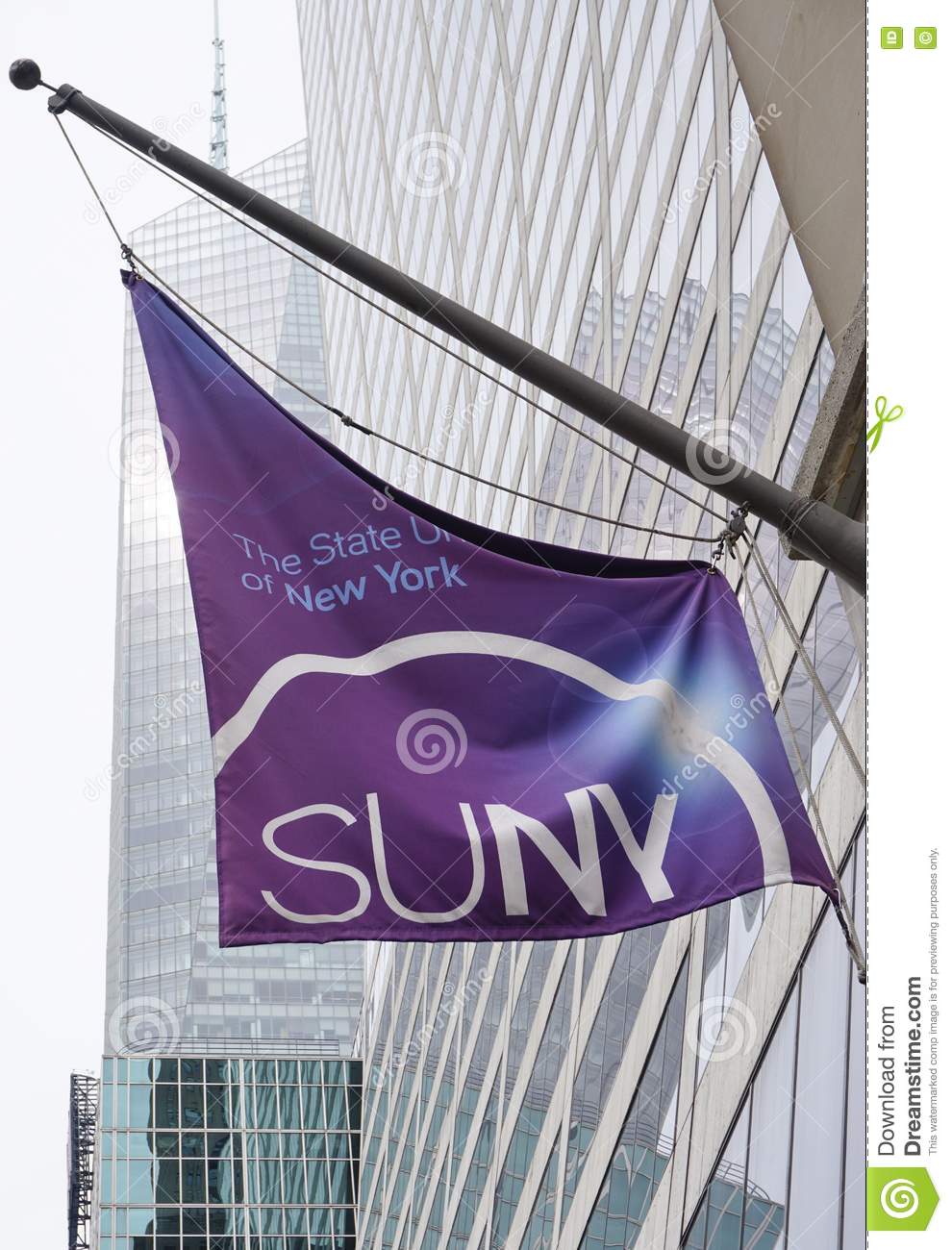
State University of New York
Albany , New York , United States
- Founded: 1948
- Establishment: University
- Type: Public
- Total Students: 394220
State University of New York
New York is one of the last states to set up a state college and university system. The first colleges were established privately, with some arising from local seminaries. But New York state had a long history of supported higher education prior to the creation of the SUNY system. The oldest college that is part of the SUNY System is SUNY Potsdam, established in 1816 as the St. Lawrence Academy. In 1835, the State Legislature acted to establish stronger programs for public school teacher preparation and designated one academy in each senatorial district to receive money for a special teacher-training department. The St. Lawrence Academy received this distinction and designated the village of Potsdam as the site of a Normal School in 1867.
On May 7, 1844, the State legislature voted to establish New York State Normal School in Albany as the first college for teacher education. In 1865, the privately endowed Cornell University was designated as New York's land grant college, and it began direct financial support of four of Cornell's colleges in 1894. From 1889 to 1903, Cornell operated the New York State College of Forestry, until the Governor vetoed its annual appropriation. The school was moved to Syracuse University in 1911. It is now the State University of New York College of Environmental Science and Forestry. In 1908, the State legislature began the NY State College of Agriculture at Alfred University.
In 1946-48 a Temporary Commission on the Need for a State University, chaired by Owen D. Young, Chairman of the General Electric Company, studied New York's existing higher education institutions. It was known New York's private institutions of higher education were highly discriminatory and failed to provide for many New Yorkers. Noting this need, the commission recommended the creation of a public state university system. In 1948 legislation was passed establishing SUNY on the foundation of the teacher-training schools established in the 19th century. Most of them had already developed curricula similar to those found at four-year liberal arts schools long before the creation of SUNY, as evidenced by the fact they had become known as "Colleges for Teachers" rather than "Teachers' Colleges."
On October 8, 1953, SUNY took a historic step of banning national fraternities and sororities that discriminated based on race or religion from its 33 campuses. Various fraternities challenged this rule in court. As a result, national organizations felt pressured to open their membership to students of all races and religions. The SUNY resolution which was upheld in court states:
Resolved that no social organization shall be permitted in any state-operated unit of the State University which has any direct or indirect affiliation or connection with any national or other organization outside the particular unit; and be it further
Resolved that no such social organization, in policy or practice, shall operate under any rule which bars students on account of race, color, religion, creed, national origin or other artificial criteria; and be it further
Resolved that the President be, and hereby is, authorized to take such steps as he may deem appropriate to implement this policy, including the determination of which student organizations are social as distinguished from scholastic or religious, and his decision shall be final.
Despite being one of the last states in the nation to establish a state university, the system was quickly expanded during the chancellorship of Samuel B. Gould and the administration of Governor Nelson A. Rockefeller, who took a personal interest in the design and construction of new SUNY facilities across the state. Rockefeller championed the acquisition of the private University of Buffalo into the SUNY system, making the public State University of New York at Buffalo.
Important Facts
The State University of New York is the largest comprehensive university system in the United States. Our impact in New York State and across the globe begins with our 64 institutions, including research universities, academic medical centers, liberal arts colleges, community colleges, colleges of technology and an online learning network. We serve nearly 1.3 million students, including nearly 600,000 in credit bearing courses and programs and more than 700,000 through continuing education and community outreach programs. Our nearly 3 million SUNY alumni are located around the globe, each making their own unique impact.
SUNY data graphics
See our measured outcomes in SUNY Excels.
SUNY was created out of a commitment to opportunity and access, and designed to meet diverse needs across a vast geographic landscape. We reflect both the land grant mission reborn and a reputation for embracing new thinking and brighter ideals. Our faculty and students are constantly seeking, generating, analyzing, and sending knowledge back into the world through informed citizens, revitalized communities, and experts who transform entire sectors.
SUNY’s colleges and universities are state-supported and our graduates have been giving back and transforming the lives of local and global citizens since we were established over 65 years ago. Millions of SUNY alumni are working in their communities every day, changing and improving the world with exceptional contributions—whether defined as a medical breakthrough, a technological innovation, an inspirational piece of art, or the birth of a new business.
By leveraging our talents and resources in targeted, quantifiable ways, we bolster New York’s economy and enhance quality of life for its citizens. Learn more about the Power of SUNY, where we outline our goals and firm intentions.
Ranking / Awards
Distinguished Faculty Rank programs encourage ongoing commitment to excellence, kindle intellectual vibrancy, elevate the standards of instruction and enrich contributions to public service. They demonstrate the State University’s pride and gratitude for the consummate professionalism, the groundbreaking scholarship, the exceptional instruction and the breadth and significance of service contributions of its faculty.
Appointment constitutes a promotion to the State University’s highest academic rank, and it is conferred solely by the State University Board of Trustees.
The Distinguished Professorship is conferred upon faculty having achieved national or international prominence and a distinguished reputation within the individual’s chosen field through significant contributions to the research and scholarship, or through artistic performance or achievement in the fine and performing arts.
The Distinguished Service Professorship is conferred upon instructional faculty having achieved a distinguished reputation for service not only to the campus and the University, but also to the community, the State of New York or even the nation, by sustained effort in the application of intellectual skills drawing from the candidate’s scholarly research interests to issues of public concern. It is bestowed on faculty in any of the disciplines or fields of study.
The Distinguished Teaching Professorship is conferred upon instructional faculty for outstanding teaching competence at the graduate, undergraduate, or professional levels. Teaching mastery is to be consistently demonstrated over multiple years at the institution where the Distinguished Teaching Professorship is bestowed.
The Distinguished Librarian is conferred upon librarians whose contributions have been transformational in creating a new information environment by providing access to information, sharing or networking information resources, and fostering information literacy. The Distinguished Librarian rank honors and promotes the achievement of personal excellence, groundbreaking professional progress, and wide-ranging benefit to the academic community.
Features
-
Ranking: 251

-
Ranking: 801

- Type of Accommodation: On Campus
Financials
Marketing Material
Contact Information
- H. Carl McCall SUNY Building 353 Broadway Albany, NY 12246
- To know more contact PSA toll free number 18002585772
Campus Information
Brockport Campus
Programs Offered
Bachelor's in Environmental Science
- Length 04 Year
- Total Tuition Fee 67920 USD
- Application Fee 50 USD
- Average processing time 20 days

